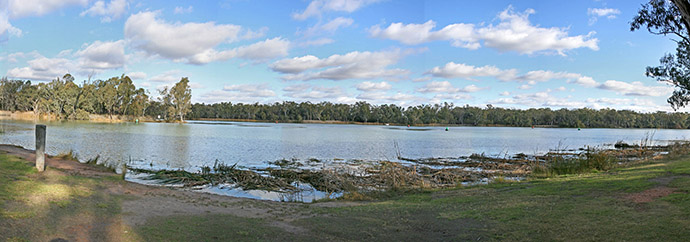Priority Schemes for Water Allocation in Australia
|
| The CSTPR blog, Prometheus, was launched in 2004 as an informal outlet for news, information, and opinion on science and technology policy. It was revived recently to regularly feature content from CSTPR core faculty, research associates, postdocs, visitors, students and affiliates to serve as a resource for science and technology decision makers. This new dynamism reflects the new energies and pursuits taking place in and around CSTPR. Below we feature one of the recent Prometheus blog posts. |
What can states do when their surface waters run short of the flows needed to satisfy water right schemes, and some valid claimants will need to be denied access? Such is a likely scenario under conditions in which climate change is expected to exacerbate the magnitude and frequency of drought seen across the American west in recent years. Australia and the Netherlands have each developed priority schemes for dealing with severe water shortages, identifying a hierarchy among water claims that supersedes systems governing allocation during normal flow periods. The Dutch, who are renowned for their efficiency in managing both water surpluses and shortages, have developed an allocation scheme that recognizes the priority of some categories of water use over others, as well as among uses with those categories. Of highest priority are the Category 1 “water safety and prevention of irreversible damage” uses that include stability of the nation’s water defenses as the highest priority use, followed by subsidence of peat grounds and the prevention of irreversible damage to ecosystems. Since all three are non-extractive uses, the national legal recognition of this category as of highest value requires that some water be left within river basins even in cases of severe drought, prioritizing these to all extractive uses. Category 2 “utilities” uses include the provision of drinking water first and production of energy second, except when “the supply of energy is not at risk,” in which case further energy production becomes a category 4 use under the scheme. In Category 3 are two “small-scale, high-quality” uses of water available after Category 1 and 2 uses are satisfied, including “sprinkling” of “crops that are threatened by a total crop failure” due to drought and where “a small amount of water could prevent major damage,” elevating it above general agricultural uses in Category 4, with all remaining uses relegated to Category 4, and with regional officials charged with determining priorities within the category. Remaining uses include major economic uses (shipping, industry, irrigation for agriculture, and fishing) as well as water recreation and environmental flows not involving irreversible damage. The Dutch scheme reflects a prioritization for security and critical ecological interests within Category 1, basic human needs within Category 2, and higher and low value economic and recreational values in Categories 3 and 4, mirroring principles found in the natural resource justice literature. As such, it represents the most fully developed water allocation priority system for addressing water scarcity, albeit one for a region that is more accustomed to dealing with having too much rather than too little surface water, and within a water governance system that is quite different from U.S. riparian law. |
|
Another innovative priority scheme has been developed in a system that more closely resembles the U.S. in terms of its system of water rights and recent experiences with severe drought. In response to recent severe drought conditions and in anticipation of further water shortages that exceed its ability to recognize historical water rights, Australia has adopted a rationing scheme that seeks to protect “critical human water needs” (CHWN), defined in terms of the “minimum amount of water needed to meet basic human needs.” Under the Murray-Darling Basin Plan, for example, New South Wales requires 61GL, Victoria requires 77GL, and South Australia requires 204GL to satisfy CHWN, trumping water right claims under Tier 2 “very low water availability” periods as well as Tier 3 “extreme and unprecedented conditions” for water quality or quantity. While not as developed as the Dutch category system, the prioritization of CHWN over routine legal water claims during drought periods represents an innovative reform designed to cope with environmental change through normative criteria that supersede and modify legal rights to water. Elements of an ad hoc priority scheme began to develop under California’s recent drought and subsequent water emergency, in which municipal water districts faced mandatory reductions in use while rationing efforts did not require similar reductions from the state’s agricultural sector. However, these allocation decisions were not made in the deliberate manner and according to the priority principled used in developing the Dutch category scheme, and do not trigger mandatory “water sharing” responses capable of trumping water rights, as in Australia. In anticipation of climate change placing increasing strain upon standard schemes of water rights in the future and of water allocation decisions becoming a key component of routine adaptation to such change, these innovative approaches to water governance offer instructive cases for how we in the American West might meet future water supply challenges. Along with an Australian water scientist and a Dutch philosopher and engineer, I am studying these two priority schemes for insights into how the value choices that they embody get identified and operationalized, as well as how various stakeholders are included in processes by which such schemes get developed and implemented. Our goals is to understand how water governance systems may adapt to water shortages while maintaining commitments to equitable, sustainable, and efficient water uses. Read more... |


